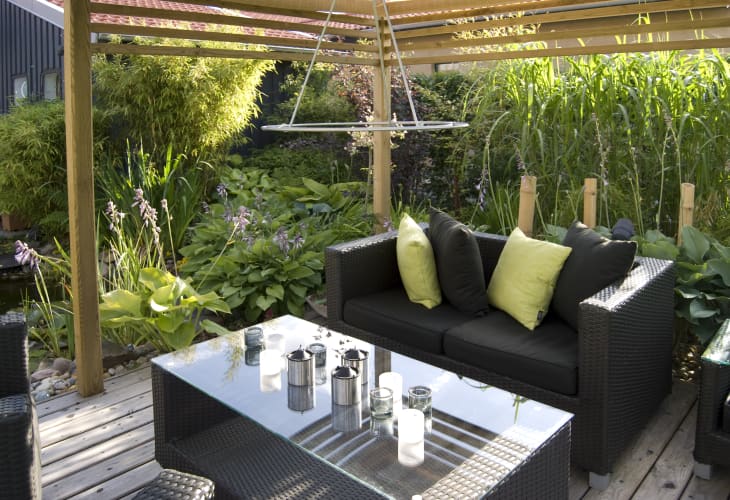
The hot new trend in planting right now is: grass. Grass?—you may find yourself asking. How could anybody get excited about grass? But that’s because you haven’t seen this grass. Whether you want to make a strong statement, block out your neighbor’s house without a fence, or just add shape, texture, and style to your outdoor space, the answer is grass. Let’s take a look.
The key is ornamental grass, an unfussy, resilient plant that’s an ideal choice for low-maintenance gardens. Most are drought-resistant and fairly easy to grow, and do well in colder climates. They’re a direct contrast to perfectly manicured green lawns, instead providing texture to your yard—especially when mixed with wildflowers, lavender, or even succulents. They’re a complementary plant, and serve to make your garden that much more eye-catching.
Probably the best known (and most striking) of the ornamental grasses is pampas grass. In the fall, it produces feathery plumes, almost like a truffula tree. And it’s available in white and pink varieties, so you can mix up the colors and turn your yard into a colorful canvas (they can grow up to 10 feet tall!). They look equally as good individually in a vase, like a Monstera leaf. Pampas grass can be invasive though (especially in California), so it should be cut down in the early spring.

A lovely alternative to pampas grass is muhly grass. Both grasses bloom in fall and create distinctive, feathery plumes, but muhly grass does not grow quite as tall as pampas grass (about 3-4 feet), and is native to the Southeastern United States. It’s extremely hardy in drought conditions (yet can withstand flooding for a short time) and requires hardly any upkeep—just make sure it’s planted in an area with good sunlight and drainage.
Another option is Japanese forest grass, a low-growing plant that, unlike pampas and muhly grasses, thrives in shady areas. It makes for a good accent plant in shady gardens, and can get dense—individual leaves can get as long as 10 inches. It likes moist, well-drained soil with lots of organic matter, so definitely don’t try to grow in dry, hot areas.
Hải Yến
Gió bạn với cây tự buổi nào ,
Gió về cây lại ngất ngư chao .
Gió đi cây sẽ im lìm đứng,
Như kẻ lỡ làng dạ khát khao .



